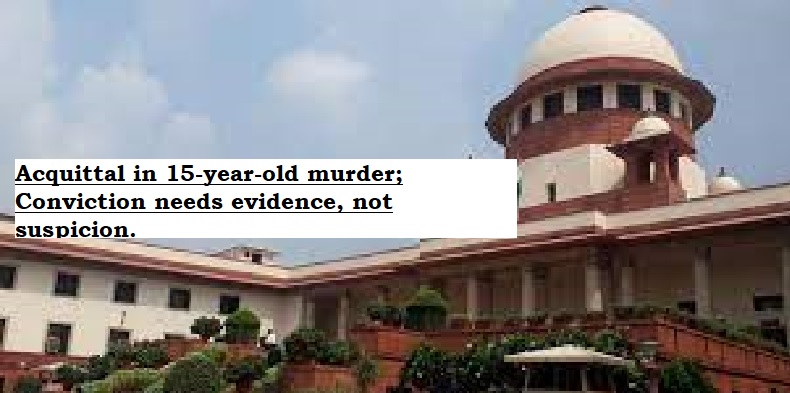


In addressing the pivotal question of whether the mere suspicion arising from the sole recovery of a blood-stained weapon could serve as a foundation for conviction, the Supreme Court, on January 24, rendered a decisive verdict in the negative. The Court unequivocally asserted that the solitary circumstance of discovering a blood-stained weapon could not be the basis for a conviction unless it was demonstrably linked to the accused's involvement in the murder of the victim.
The Bench, comprised of Justices B.R. Gavai and Sandeep Mehta, took the momentous step of overturning the concurring findings of both the High Court and the Trial Court. Their ruling emphasized that an accused individual cannot be convicted solely on the grounds of suspicion unless accompanied by corroborative evidence proving the accused's guilt beyond a reasonable doubt.
The Court underscored the well-established legal principle that suspicion, no matter how strong, cannot supplant the requirement of proof beyond a reasonable doubt. It firmly reiterated the presumption of innocence afforded to an accused until proven guilty through irrefutable evidence. In essence, the Court's stance illuminated the imperative nature of relying on substantive proof rather than circumstantial suspicion in criminal convictions.
The case at hand revolved around the prosecution's assertion that the accused committed a murder in 2009, inflicting fatal blows with a dagger before enlisting the help of others to wrap the victim's body in a blanket. Various recoveries were made at the accused's direction, indicating the presence of human blood on the recovered dagger. However, the prosecution failed to conclusively establish that the bloodstains on the weapon belonged to the deceased.
The Trial Court had previously convicted the accused, citing the similarity between the recovered pieces of blanket and those found at the site of the incident and where the body was subsequently taken for disposal. The High Court, in affirming the conviction, emphasized the accused's failure to provide a satisfactory explanation during questioning under Section 313 Cr.P.C. regarding the recoveries and the forensic report.
Challenging the conviction, the accused contended that no conviction could stand solely on suspicious police recoveries. The defense argued that the prosecution had fallen short of proving guilt beyond a reasonable doubt, especially considering the lack of matching blood group evidence between the accused and the victim.
Upon careful examination of the evidentiary material, the Court discredited the prosecution's evidence, particularly the Forensic Science Laboratory (FSL) report. While the report indicated the presence of human blood on the dagger, it failed to establish a match with the deceased's blood group.
The Court emphatically declared that the isolated circumstance of recovering a blood-stained weapon could not form the basis for conviction unless it was conclusively linked to the accused's involvement in the murder. It iterated that conviction grounded in mere suspicion lacked validity, placing the onus on the prosecution to establish guilt beyond a reasonable doubt.
Furthermore, the Court rejected the High Court's reliance on the accused's non-explanation or false explanation under Section 313 Cr.P.C. as an additional link in establishing the chain of circumstances. The Supreme Court underscored that such explanations should only be considered after the prosecution fulfills its duty of proving the case beyond reasonable doubt and can, at best, fortify the overall conclusion of guilt based on proven circumstances.
In summary, the Supreme Court's landmark decision underscored the critical importance of concrete evidence in criminal convictions, cautioning against reliance on suspicion or circumstantial findings alone. The ruling served as a resolute affirmation of the principle that an accused is presumed innocent until proven guilty through the rigorous standard of proof beyond a reasonable doubt.
TAGS: Supreme Court conviction suspicion blood-stained weapon murder case evidence reasonable doubt accused High Court Trial Court